Methi Vadi is a Maharastrian snack made with methi (fenugreek) leaves, spices, and flours. Steamed Methi Vadi can be enjoyed plain or shallow-fried.

Winter is the time we get fresh Methi leaves. These small, tender leaves are slightly bitter, yet they add a delicious flavour to the savoury, spicy flour and spices. Crisp Methi Vadi taste wonderful with a cup of tea. But serve it as a side with lunch, dinner.
Let me share a quick story. Kamat teacher my husband's math teacher, sent Methi Vadi. Hubby hates methi but enjoyed them and asked me to get the recipe. Of course I did! It is pretty similar to Kobi chi Vadi, but the flavour and the aroma are totally different.
Jump to:
What is a Vadi?
Vadi or Wadi is a common term in Indian languages.
Depending on the context, it can mean a speaker or orator in Sanskrit; in Hindi, it means plaintiff; in Indian music, "Vadi Swar" means the most important note. There are other meanings, like a dried riverbed, but I am more interested in food.
It generally means sun-dried dumplings. However, in Marathi, it means a flat piece, a bar of soap is "Sabanachi Vadi," Coconut Barfi is "Narchi chi Vadi", Cabbage Cakes is called Kobi chi Vadi.
I have used vadi in many different ways. Have you tried the Goan Vadiyo Kismoor, one of the vegetarian options for Kismoor, a Goan side dish?
In the winter, when we get lovely green peas, make some Matar Ka Nimona Recipe. Then we also have Alu Vadi, Perad.
Ingredients for Methi chi Wadi
These are the ingredients you will need. For quantities, check the recipe card.

- Methi Leaves: Fresh fenugreek leaves, the winter special, make this dish special.
- Besan Flour: (or gram flour, chickpea flour), a gluten-free flour, gives a slightly nutty flavour and is a protein source for us as vegetarians.
- Jowar Flour: Sorghum flour, a millet flour that I love to use.
- Herbs and Spices: Use garlic paste, green chilli paste, cumin seed powder, chilli powder, turmeric powder and coriander powder.
- Seasonings: You will need salt, and since it is fenugreek leaves, add sugar. The sugar will balance the bitterness of the leaves.
- Lemon Juice: Do not skip lemon juice; it will balance the bitterness of the fenugreek leaves and the sweetness of the sugar.
- Oil: I prefer sunflower or rice bran oil. But groundnut oil tastes great too.
How to make Methi Vadi
Making Methi chi Vadi is easy
- Crush the well-drained, chopped methi leaves with your hands, along with the herbs, dry spices, salt, sugar, and lemon juice. Until they wilt and release some water.
- Add the flours and mix until a firm dough forms, not too dry, not too wet. Then divide into 2 balls.
- Grease 2 plates with oil and, using your finger, flatten the ball on the plate.
- Steam for 10 minutes, or until the knife inserted into the centre of the plate comes out clean.
- Cool and cut into pieces. You can serve them straight with cutney.
- To can jack up the taste by shallow-frying the methi vadi in oil until golden brown.
Top tip:
- This time, I was out of sesame seeds, and hence I did not add them. Add these tiny seeds to the dough, 1 tbsp. Semase seeds are recommended, especially for winter. They are packed with nutrients, and they provide the heat and energy we need in winter.
Substitutes and Variations Methi Vadi
Your substitutes and variations for the ingredients to suit your tastes and pantry.
- Jowar flour: Use whole wheat flour or just besan.
- Bhajani: Use bhajani in place of besan and jowar flour. The taste and aroma are something you will love.
- Methi leaves: Use palak, coriander leaves. You can skip sugar if using palak or coriander leaves.
- Onions: Finely chopped onions make a lovely addition.
- Lemon: Use tamarind juice instead.
- Sugar: Replace with jaggery.
Equipment to make Methi Vadi
You do not need many utensils to make this recipe. The result is hardly anything to wash up.
- A wide bowl to mix the ingredients.
- 2 plates for steaming.
- A steamer or(I generally use the same bowl in which I have mixed my dough).
- A knife to cut the cooked vadi into pieces.
- Skillet and turner if you plan to shallow fry.
Storage of Methi Vadi
- Store the steamed vadi in an airtight container. This will last in the fridge for about 5 days.
- If using steamed vadis, I suggest shallow-frying them before serving. If they are sticky or smell bad, discard them.
- Now the shallow-fried version stored in an airtight box can last in the fridge for 8-10 days if you can leave the container alone.
Top tip for Methi Vadi
- Remember, even the people who refuse methi enjoy methi vadi, so plan and make extra.
- Use fresh fenugreek leaves when in season. I think kasuri methi is more bitter than fresh, so use 2-3 tbsp; however, I have not tried making methi vadi with it. Please let me know if you try.
- Use sugar and lemon to reduce the bitterness of methi in your methi Vadi.
- I make my Methi Vadi thin because they steam faster, but you can make them thicker if you prefer. Remember, you will have to steam extra depending on the thickness. The test will be the knife coming out clean in the centre.
Paring Recipes
Pair your Methi Vadi with
Summary: Methi chi vadi is a flavourful way to incorporate methi (fenugreek) into your diet. The crisp savoury snack is popular in Maharashtra. The taste and the flavours make it enjoyable both as a snack and a side for a meal.
Do you have favourite recipes with fenugreek or methi leaves, that I haven't tried yet? Tell me in the comments-I will love to hear about cooking in your kitchen!
I participate in the group Shhh! Cooking Secretly. The signup opens every month with a suggested theme. We then partner with another member and exchange secret ingredients to cook with. We share pictures in the Facebook group and try to guess the ingredients used. Currently, we are allowing the redo of old recipes.
This month, I am partnering with Priya of Sweet Spicy Tasty. She suggested I cook with jowar flour and lemon. I suggested she usee cumin powder and coriander seed powder. Just check the yummy Lauki Curry, honestly I do not enjoy Lauki but looking at her curry I brought Lauki.

Crisp Methi Vadi Recipe
Equipment
- 1 Bowls to mix the ingredients
- 2 Plates for steaming
- 1 Steamer I generally use the same bowl in which I have mixed my dough
- 1 Knife to cut the cooked vadi into pieces
- 1 Non-stick tava/skillet to shallow fry
- 1 Kitchen turner
Ingredients
- 1 bundle fenugreek leaves or methi leaves, rinsed, drained and chopped about 2 cups
- 1 cup besan
- ¼ cup jowar flour
- 2 tablespoon garlic paste
- 1 tablespoon Green chilli paste
- 1 teaspoon cumin seed powder
- 1 teaspoon Sugar
- 1 teaspoon Salt
- 1 teaspoon red chilli powder
- ½ teaspoon Coriander seed powder
- ½ Lemon
- ½ teaspoon Oil
- ¼ cup Oil
- Water for steaming
Instructions
- In a wide bowl, mix and crush the well-drained, chopped methi leaves with the dry spices, salt, sugar, garlic paste, green chilli paste, and lemon juice. Until they wilt and release some water. (1 bundle fenugreek leaves,1 teaspoon cumin seed powder,1 teaspoon red chilli powder, ½ teaspoon Coriander seed powder, 1 teaspoon Salt,1 teaspoon Sugar,2 tablespoon garlic paste,1 tablespoon Green chilli paste, ½ Lemon )
- Add the flours and mix until a firm dough forms, not too dry, not too wet. Then divide into 2 balls.
- Grease 2 plates with oil and, using your fingers, flatten the ball on each plate. If the dough sticks to your fingers, apply a little oil to them. (½ teaspoon Oil)
- Heat the water in the steamer until it boils. (Water)
- Steam the plates for 10-12 minutes, or until a knife inserted into the centre of the plate comes out clean.
- Cool and cut into squares or diamond shapes. Serve the Vadi with chutney.
- But to can jack up the taste by shallow-frying the methi vadi in oil until golden brown on both sides. (¼ cup Oil)
Serving
- I served the Methi Vadi with a mix of tamarind and date chutney.
- But frankly, I had gobbled quite a few before frying and as I got them off the skillet.



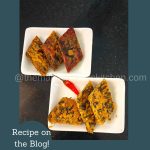
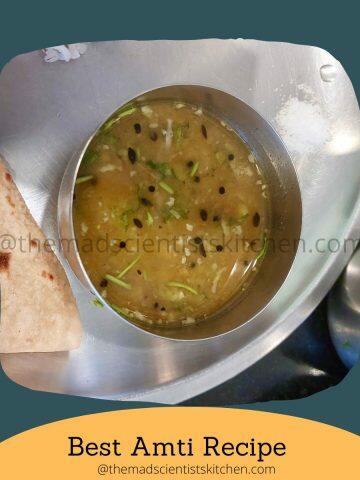

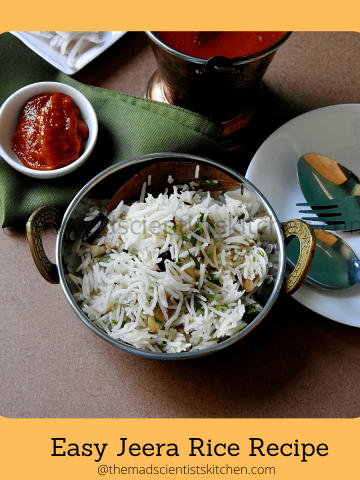

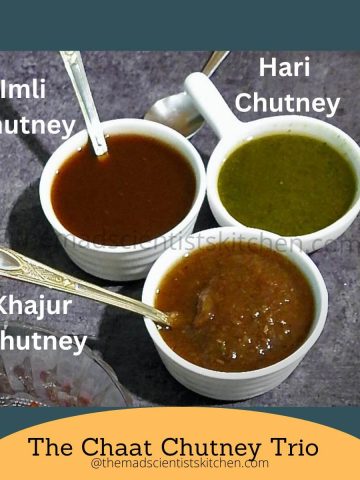
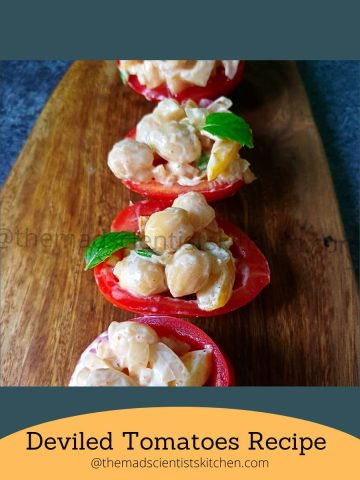

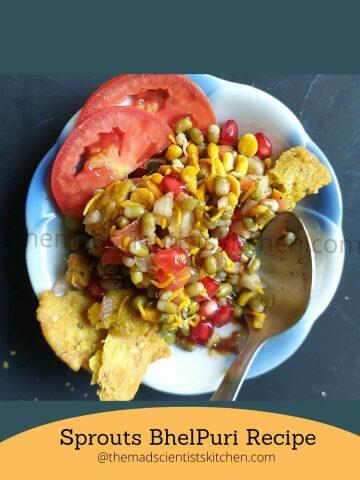
Your comments, feedback are something I look forward to. So do comment and share with family and friends.